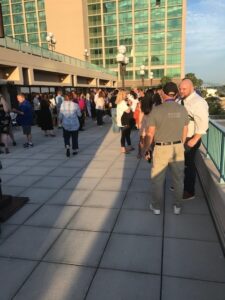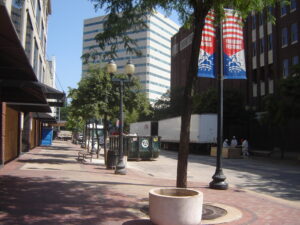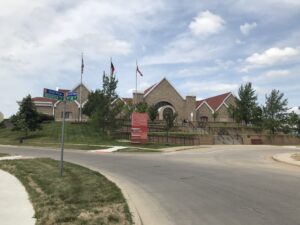Over the past few months, we have posted ten short blog videos detailing the progress of Planning to Turn the Tide, the documentary on planning for resilience against natural disasters being produced by the American Planning Association’s Hazard Mitigation and Disaster Recovery Planning Division. In this post, we highlight the support of APA Chapters by featuring a staff member from APA Florida, Suzie Gray, who talks about her role at the APA Florida conference we visited in Jacksonville in early September.
From our first interactions with Florida Chapter representatives and staff, they have been enthusiastic about supporting the project. Not only did they supply numerous contacts, suggesting people for interviews or information, but they also extended a gracious invitation for us to visit their annual conference in Jacksonville, which took place September 5-8. We have forged similar alliances with other APA chapters since then, one of which was illustrated in Colorado in July, and most recently in Texas, the subject of upcoming blog videos. These are really important opportunities for professional collaboration and support within the framework of a larger professional organization, but it also affords us an effective base of operations during a conference, especially in the use of space suitable for recorded interviews.
Click here to watch the video featuring Suzie Gray discussing her work with us under the banner of the Florida APA Chapter.
The core team of the HMDR video project wishes to thank APA Florida staff and volunteers for their wonderful assistance in putting us in touch with the best planning voices in their state and lending their credibility to what we are trying to accomplish. Our challenge would be much greater without them.
To support the HMDR film-making effort, use either the donations link here or the QR code below. We will acknowledge all donors, whose help we greatly appreciate. Make this your film too as we move forward.
Jim Schwab




